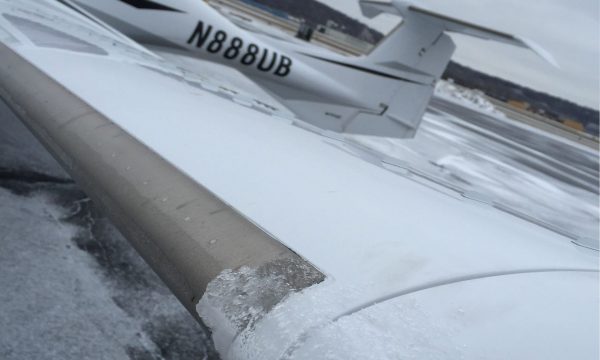

All weather conditions present a distinct set of challenges to a pilot, particularly those looking to log as many hours as possible, but the accumulation of ice can quickly place an aircraft in trouble.
Every pilot should be aware of the weather forecast on route, particularly whether icing conditions are likely and where there are safe ways to escape the icing before taking off. You should also be aware of when icing conditions are being entered in to, and how it may affect your descent towards landing. Whilst aircraft certified FIKI are legal for take-off in icing conditions the safest way to deal with ice is to avoid it.
Thorough checking of weather and flight reports of the planned route is essential prior to take off. For the best range of data, consult information from different sources. The FAA Flight Service Stations is a good place to start, as they provide briefing packages that bundle all the weather information you’ll need to make decisions about your flight, including full pilot reports (PIREPs), sky conditions, visibility and weather conditions for every step of your planned flight. They also include information on cloud tops, ceilings, temperature and icing conditions, so you should be able to make an informed decision about whether you’ll encounter icing or not on your planned route.
As well as consulting the FAA, visual information from television and online weather sources can help you to plan more clearly and make full sense of a telephone briefing or written reports. If it looks like there might be a chance of icing conditions on your flight plan, gather more information. The more you know, the better a decision you can make about your route and whether to fly.
If there’s a chance of icing en route, make sure you properly evaluate the risk in terms of:
Evaluate these factors to ensure that you’re confident you can deal with any potential icing safely. Ensure your aircraft’s ice protection equipment is fully functional before taking off and that any escape plans or rerouting plans have accounted for reserve fuel supplies.
Weather changes rapidly and actual conditions could well have changed since you made your flight plan. No matter how thorough your pre-flight preparation, never underestimate the importance of continuing to check the weather throughout your flight.
Keep informed of:
Visuals – Stay aware of external conditions and compare these with the weather you expected from reports and your flight plan.
Weather broadcasts – request to change frequencies to get weather updates from en route flight advisory services.
Air Traffic Control – keep an eye on ATC frequencies for reports and note if other flights are requesting diversions.
On-board icing detection systems – keep an eye on your onboard instruments, particularly the outside air temperature gauge so that you can be sure you’re not flying into freezing precipitation.
The sooner you identify that you’re entering icing conditions and can activate your de-icing and/or anti-icing equipment the safer you will be. Then you will need to evaluate if you can exit the conditions quickly enough by continuing course, or if you need to make a diversion to escape icing.
Prior to your descent, request the weather conditions at your destination airport from the airport controllers or listen for automated reports via ATIS, ASOS, AWOS. If your descent involves flight through icing conditions, confirm your autopilot is switched off and your ice protection equipment is operational.
No one can predict the weather with 100% accuracy; it can change rapidly and even the most experienced pilots and flight planners have been caught out. CAV’s TKS provides the highest levels of ice protection available for those unexpected icing encounters. With both anti and deicing capability to guard the entire surface of your aircraft, TKS provides peace of mind knowing that even if you find yourself in icing conditions unexpectedly, you’ve got protection to help you escape safely.
To find out if your aircraft is properly equipped for icing conditions, read our article Are you ice legal?. If your plane is already equipped with our TKS system, keep it running like new with our guide Is your TKS ready for winter?